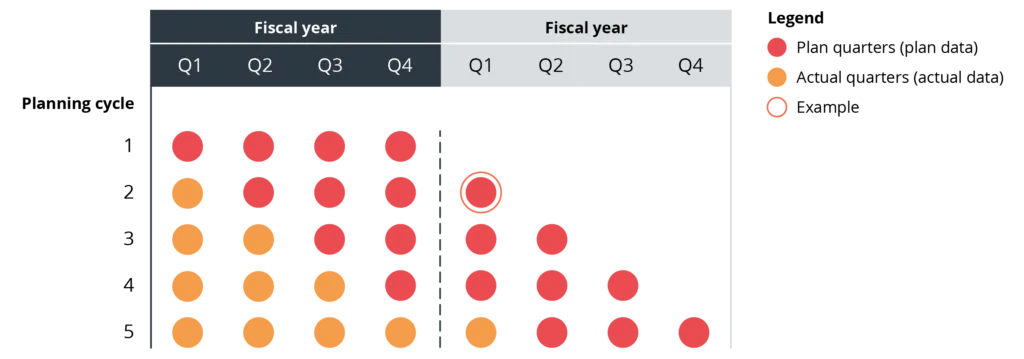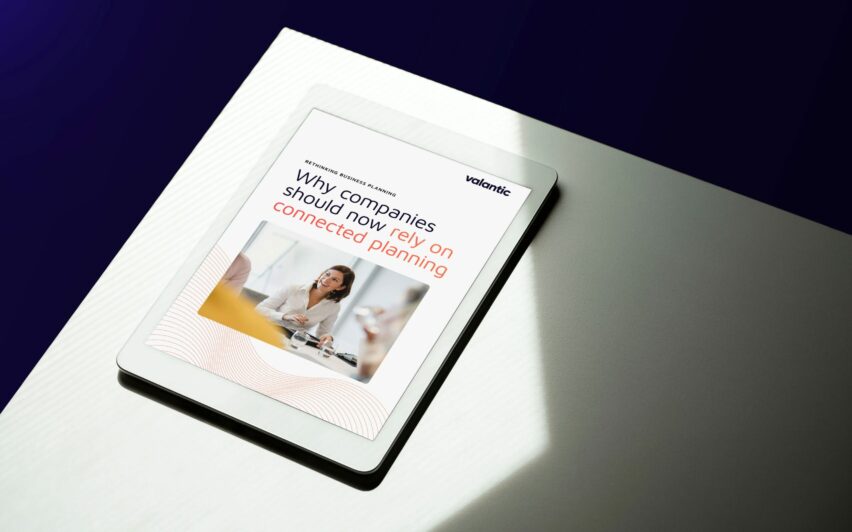Highlight

Successful together – our valantic Team.
Meet the people who bring passion and accountability to driving success at valantic.
Get to know usSeptember 10, 2021

Rolling forecasts give companies the agility and flexibility they need in volatile, rapidly changing markets. The real-time cloud-based planning tool Anaplan provides all the functionality companies need to compete more successfully.
The Corona crisis continues to hold the business world in its grasp. While global supply chains broke down in the first phase of the pandemic, retail closures in the non-food segment later clouded the business situation of some industries. Currently, bottlenecks on the supply side are causing concern among executives. The automotive industry is groaning under a glaring shortage of chips. In addition, fueled by unprecedented demand, the bicycle industry is also facing supply bottlenecks. In local bicycle shops, both bicycles and their spare parts are in short supply.
The disruptions in the business world due to the Corona pandemic make business planning significantly more difficult. However, even after the Corona pandemic, external factors will still pose a risk of shaking the business world. For example, increasing trade conflicts and natural disasters can force companies to make last-minute planning changes. As a result, companies are increasingly looking for flexible planning that provides answers to last-minute market developments
Efficient and effective planning is essential for every company. In financial planning, companies transfer the goal-oriented specifications of their operational planning into budget planning. The budget planning process for the next fiscal year is usually initiated toward the end of a fiscal year. Budgeting is based on the forecast of the business situation for the next 12 to 15 months. The early days of the Corona crisis have shown that the assumptions made when a budget is planned may be outdated even early in a fiscal year. If this is the case, budgeting can no longer fulfill its role of controlling the organization.
Ad-hoc forecasts are a way to respond to unforeseen changes in market conditions. However, ad hoc forecasts are often done outside the regulated planning process. A dynamic market environment requires an option integrated into the standard planning process to adjust the planned values based on current assumptions and actual data from previous weeks and months. In addition, the planning horizon for classic budget planning and ad hoc forecasts is usually fixed rigidly at the end of the planned fiscal year. Toward the end of a fiscal year, the specialist departments therefore lack the planning certainty to advance projects beyond the fiscal year in order to achieve medium-term goals.
The rolling forecast offers an opportunity to adapt a company’s different planning areas to the challenges of our time. For example, while classic budgeting and out-of-process ad hoc forecasts usually do not go beyond the underlying planning year, the rolling forecast considers periods beyond the end of the year. As part of a quarterly rolling forecast, an initial set number of quarters is planned regardless of the fiscal year into which they fall. A recommendation for selecting planning intervals depends on the sector and dynamics of the market environment.
Our client in the clothing industry selects one-month planning intervals for the rolling sales forecast, which is linked to a quarterly rolling financial forecast. Toward the end of each planning interval, the subsequent intervals are re-planned and re-evaluated based on all available actual data from past intervals and updated assumptions.

The benefits of a rolling forecast are clear: The ongoing adaptation of the assumptions and the addition of all available actual data increase the accuracy of the planning. The planned values for future planning intervals are updated continuously. In addition, unlike ad-hoc forecasts, the rolling forecast can be integrated into companies’ planning processes based on a predefined procedure and fixed planning intervals. Companies that operate in a dynamic market environment choose short planning intervals so they can take appropriate measures quickly in order to steer the company in the right direction.
In this context, the rolling forecast in financial planning supports budget planning in the exercise of its control function. Furthermore, the introduction of a rolling forecast beyond the end of the year ensures better predictability for specialist departments. Even before the budget planning is finalized at the end of the year, the rolling forecast has planned values for the following year. These planned values can serve as guidelines for the specialist departments and ensure the medium-term planning.
Our customer from the clothing industry promises a more precise sales forecast with the introduction of a rolling forecast – and this is supposed to have a positive impact on the planning quality in all divisions of the company. Lower warehouse costs, efficiencies along the supply chain, and an overall improved crisis response are now the basis for our customers to meet future challenges. (Additional information: Customer projects have shown that the implementation of a rolling forecast is a challenge.)
Since the beginning of the century, the real-time enterprise has been part of a vision of the future for the management of many companies. The real-time enterprise ensures that information is up-to-date and consistent across system and departmental boundaries. To achieve this, the processes and data flows have to be designed in such a way that the right information is provided to the right process stakeholders at the right time (source: What is a real-time enterprise (RTE)? – definition from Techopedia). On the process side, the concepts of business process management (BPM), which include continuous development of processes within the framework of the BPM life cycle, and process workflow supporting systems (BPM systems) play a decisive role along the path to the real-time enterprise.
In addition to organizing a real-time transport of the information, it is also important to provide the data on which the information is based in real time. This would mean making data available immediately to update the information base. In the context of the rolling forecast, this would be accompanied by a significant reduction in planning intervals. However, with the introduction of a rolling forecast in real time, there would probably no longer even be any talk of planning intervals. There would be no need to discuss whether months or quarters should be defined as planning intervals; planning would be done all the time. The rolling forecast is based on continuously updated assumptions and actual data from past hours and days. The planning horizon would thus shift backwards with each passing day.
By getting started with real-time planning, companies are reducing the time they need to respond to changes in customer requirements. Real-time information can be obtained from continuously updated plan values, which serve as the basis for decision-makers to proceed. The timely identification of changing customer requirements is a clear competitive advantage over competitors for the benefit of customers.

Fact sheet: 5 challenges when introducing a rolling forecast
What challenges and questions have to be taken into account when introducing a rolling forecast? Learn more in our whitepaper – and the real-time enterprise is becoming…
valantic recommends the cloud-based planning platform Anaplan to map the different areas of business planning in a state-of-the-art planning solution. A rolling forecast can be mapped according to customer needs with Anaplan. Anaplan calculates the planned values taking into account assumptions and current data automatically and immediately. The current planned values are thus visible in real time on the dashboards. Basically, the Anaplan platform counteracts the silo mindset at companies by using its connected planning approach to encourage the networking of the individual areas of business planning. Thanks to Anaplan, our customer in the clothing industry links sales planning with financial planning, among other things. With the introduction of a rolling forecast in both planning areas, in the future our customer will be able to react promptly and precisely to short-term developments in a dynamic market environment.

Whitepaper: This is why companies should focus on Connected Planning now
Don't miss a thing.
Subscribe to our latest blog articles.